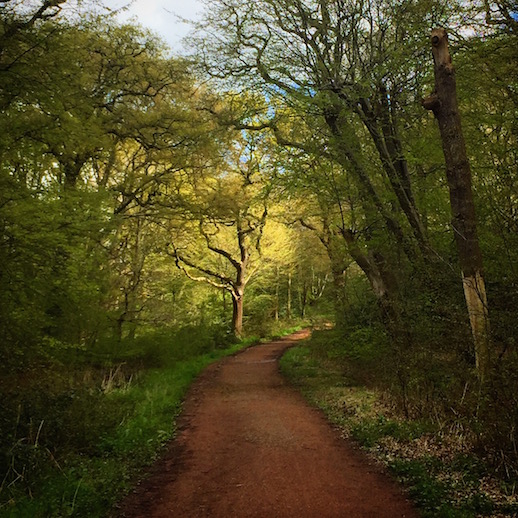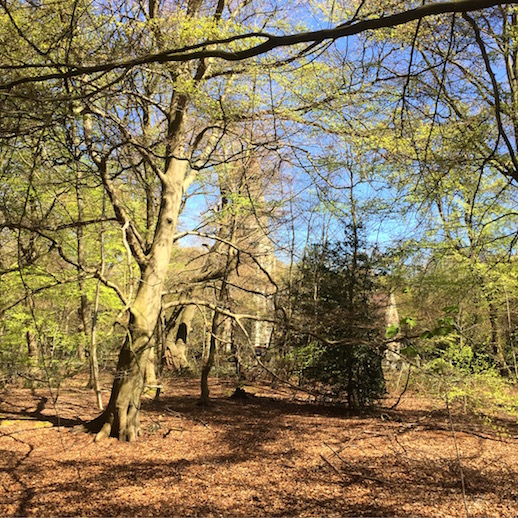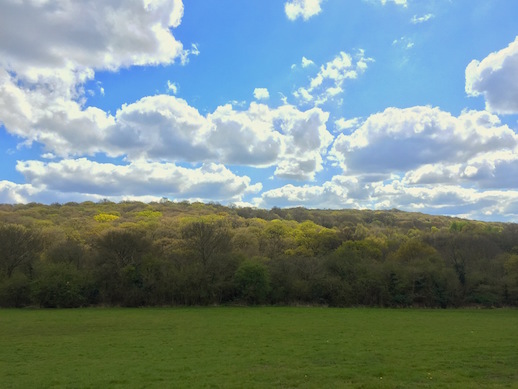
Words and pictures: Luke Turner
Google isn’t helping me with the veracity of this, but I’m sure I remember my dad telling me of a saying along the lines of ‘Londoners only knew the seasons from the orange peel littering the streets’. It no longer rings true in this age where fruit and veg are always in season via the cargo hold of a Boeing 747, and the city still does its best to hide the revolving of the year. For the early part of my 16 years in London I only noticed our journey over the points of the equinox through the things that the city allowed. There’d be taxis across London Bridge after an all-nighter, the Thames and HMS Belfast the same steel grey in the half-arsed light of dawn, early blackbirds chinking as my keys clicked in the front door. The microscopic airborne mines of the plane tree would herald summer by floating up my prodigious hooter to detonate in sneezes, shrapnel making eyes scream.
In early trips discovering Epping Forest for the first time as an adult, I only ever had a snapshot of the changing seasons. The city-dweller who becomes an occasional visitor to any wild or natural place tends to approach it as if they were stepping into a calendar, arriving for the money shot of bluebells, blossom or autumn’s pyrotechnics. Old, little-opened files of photos on my creaking laptop would, I imagine, reflect this. Conditioned by this urban life, I used to think of the year as a vinyl record, where every moment is reliant on the last as the moods evolve in a long groove that ends with a pop on December 31st. As I started to walk in the forest more frequently, this human obsession with the quantification of time – that places the calendar as a fixed grid over an ecosystem reliant on uncountable elements – no longer made sense.
More than anywhere else around London, Epping Forest gives the capital’s eight-and-a-half-million inhabitants a new sense of time passing. It’s why, as pressure inevitably grows on the Green Belt as a possible source of relief from the housing crisis, Epping Forest must remain sacrosanct. It’s the only place this close to England’s capital big enough to temporarily disappear into an illusion of wildness and feel the shifting of the moon’s clock around you. So to visit Epping Forest is no escape, but at this time of year an immersion in new light. After months of the forest trees looking crisped and meaty, the smooth elephant leg trunks of the taller beeches and pork crackling bark of the oaks are brushed with a haze of fresh leaves. It’s no longer just the hard dark of the holly and brown of leaf-fall that gives the Forest its colour. Sunlight sets off patches made up of incalculable tones of green: from tree root, to buds at the tip, to the wild garlic that lines the banks of the stream that drains Yates Meadow.

I nearly soak and lose a welly harvesting some of this pungent herb into a blue plastic offie bag. Forgetting to wash the mud, probable dog piss and insects off first I blast the lot into pesto using a broken electric blender that screams like an old Whitehouse record. If it wasn’t for the expense of pine nuts, this’d be London’s most convenient free meal, glowing in the white bowl as brightly if it were additive-stuffed and full of artificial colouring. I break a sacred rule and take a photo for Instagram before sitting down to stuff my face.
Everything in Epping Forest seems to be either eating or shagging. A walk is stopped by a nuthatch as it enthusiastically deals with beechmast on the ride in front of me. Deer are less cautious as they browse the new growth in forest clearings. Down in central London, what we used to call ‘cracky pigeons’ peck-shift chips around the pavements. Up here, patches of feathers by the rides mark the spots where their woodland-dwelling, fruit & nut-healthy living cousins have met their own demise. Others strut, puffed up and DTF. Even the trees that might look dead are merely faking it. A fallen beech has sent roots from the top of its upturned bowl of soil and muck back down into the ground, forming a grille in front of the empty space. I hope they might whang like a wood harp when I give kick with my boot. They don’t.
After the warm winter, the weather has been just skewed enough from the predictable to make deciding on appropriate clothing difficult. The sun might be hot on my shoulders, but as I climb the slope of Yates Meadow to one of the best – yet little-known – views over the city, the air from the north is cold and feels thick, like water. (When I get home, hayfever conspires with some sort of virus in an unholy alliance, bunging me up and sapping my energy for over a week).

I look up. Stiff-edged white clouds give way to patches like smudged chalk, promising a quick shower over the treetops on the reverse slope. Above the brown and green a buzzard gradually sinks downwards, unable to get much lift out of a weak spring thermal. I half shut my eyes and it grows to become some strange flying beast, lowering through the haze of the London beyond the Lea reservoirs, as if to pluck the distant BT Tower from the Bloomsbury Streets.
Luke Turner is co-founder and editor of online music and arts magazine The Quietus. He has also contributed to Q, The Guardian, NME, MOJO and the BBC and is currently researching a book on Epping Forest. See March’s ‘Notes From Epping Forest’ post here.